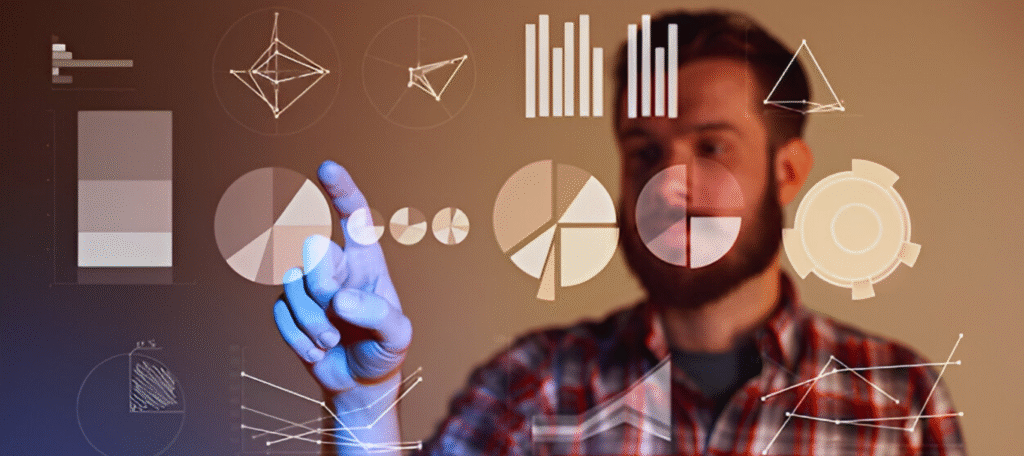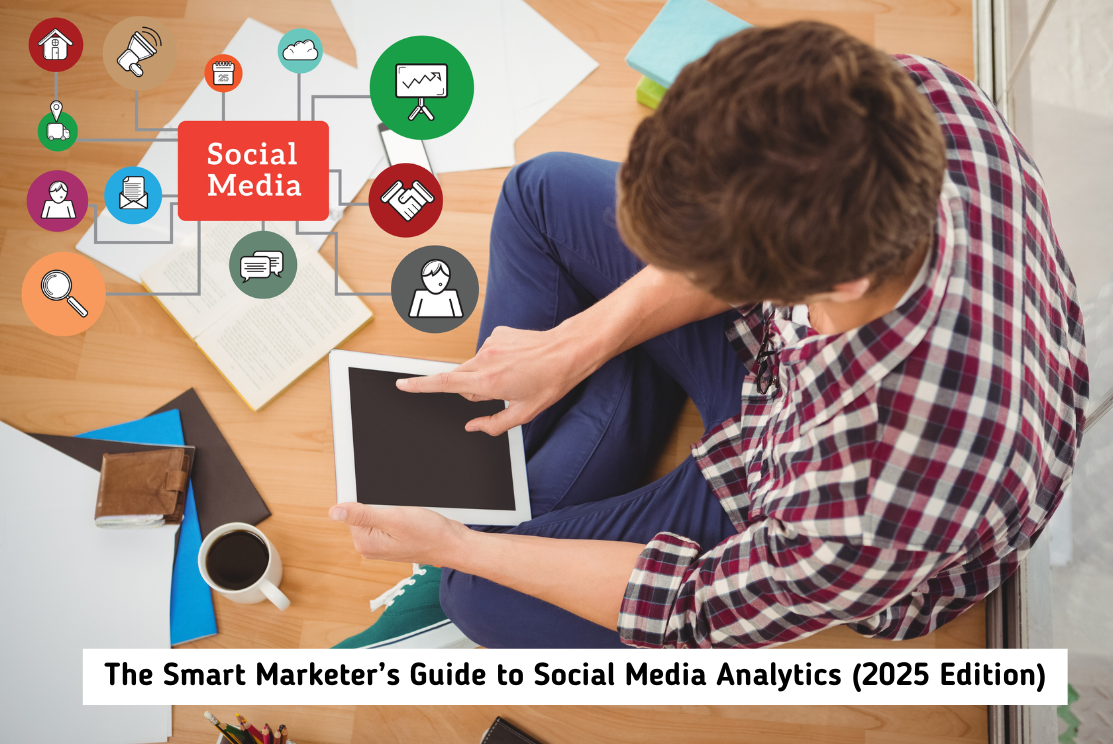Social media management doesn’t stop at content development and scheduling. Evaluating and sharing campaign impact is important to social success.
Let us talk about social media analytics.
It can seem challenging to report on performance and base strategic choices on social data, but it does not have to be!
Everything you need to know about social media analytics is right here, including metrics to monitor and tools to help with reporting and analysis.
What are social media analytics?
The process of collecting and evaluating data from social media platforms in order to help guide business decisions is known as social media analytics.
You can monitor two different kinds of social media performance and metrics:
- Descriptive metrics that explain your actions and the events that transpired; and
- The results of your campaigns are referred to as outcomes.
Although there are many different kinds of metrics, which we will discuss below, the specifics of your campaign will determine what you should track and report on.
Instead of sharing data points, you’ll want to analyze and publish the metrics that convey the story of your campaign, your wins, and what needs to improve.
Typical Metrics for Social Media
Numerous important metrics can be gathered, depending on the social networking site you are using.
- Impressions and reach: How many and how frequently people viewed your content
- Likes and reactions: what kind of content your audience enjoys;
- Comments, reposts, and shares: measurements that represent brand interaction.
Social Media Analytics: Why Are They Important?

Data collection is one thing, but without analysis, insights and outcomes are impossible. Analytics are important for social media marketers for the following reasons:
1. Analytics Provide a Comprehensive Understanding of the Marketing Funnel
Using social media to showcase your personality and business may be a fantastic top-of-funnel marketing strategy.
Consider Duolingo, whose unhinged owl draws you in and allows users to engage with their brand personality before learning more about it.
In order to comprehend how all of your content, including the humorous and eccentric pieces, contributes to the success of your company, analytics assist you in tracking your data from the top of the funnel.
Your social media strategy will gain confidence if you use analysis to link certain posts to important outcomes.
2. Analytics Enable You to Make Decisions Based on Data
Determining which data points to investigate and their significance enables you to make informed decisions and modify your approach for success.
Saying “This campaign is going well” is insufficient; you must provide evidence to support your claims, including data that demonstrates to stakeholders why the campaign is successful and what lessons can be drawn from it to sustain your success.
What distinguishes a decent social media marketer from a great one is the ability to recognize when performance is deteriorating and know how to address it.
3. Analytics Link Social Media to Overarching Corporate Objectives
Monitoring social media will let you steer the debate rather than wondering how it relates to commercial outcomes. Understanding the overarching objectives of your client or business and the metrics that affect them enables you to make deliberate decisions and demonstrates to important stakeholders the worth of your work.
How to Monitor Analytics on Social Media

Are you prepared to begin monitoring your social media performance? Here’s how to begin tracking and utilizing your main outcomes to boost growth and engagement.
Step 1: Determine Your Objectives
Set your goals first. To ensure that you understand how to assess your continued performance, this is an important place to start.
Your objectives ought to be closely related to your company’s objectives and aims.
For instance, your objective can be to increase traffic to your website via the link in bio if you work for a company that specializes in increasing e-commerce sales.
Step 2: Divide Up Your Data
Analyzing the precise sources and locations of your postings is the main goal of segmentation. This will help you determine which tactics are effective so that you can adjust your campaign planning for the future.
Step 3: Select Appropriate Metrics
Not all metrics are created equal; therefore, your particular objectives should determine which ones you select to monitor. Metrics like reach and impressions are essential if you want to increase brand awareness. Likes, shares, comments, and saves will be more useful for engagement-focused objectives.
Step 4: Track and Analyze Using Tools
It can be very difficult to manually monitor analytics, particularly when overseeing several platforms. Social media analytics tools can help with that. Tools like Later, Hootsuite, Sprout Social, Google Analytics 4, Meta Business Suite, and Buffer make it simple to gather, arrange, and display your performance data.
FAQS
1. What are social media analytics?
The process of gathering, examining, and interpreting data from social media platforms in order to comprehend audience behavior, campaign efficacy, and performance is known as social media analytics. This aids marketers in refining their tactics and making well-informed selections.
2. Why is it important to track social media metrics?
Metric tracking enables you to identify what is and is not working. It enables you to quantify return on investment, optimize content, demonstrate value to stakeholders, and coordinate your endeavors with overarching corporate objectives.
3. Which metrics should I focus on for my business?
Your objectives will determine the appropriate metrics. Pay attention to impressions and reach for awareness. Examine likes, shares, and comments to gauge engagement. Monitor click-through rates, leads, purchases, or ROAS (return on ad spend) to gauge conversions.

